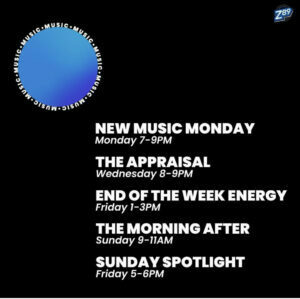New Juan Gabriel Docuseries Immerses the Viewer in ‘The Private and Public Figure’
When Juan Gabriel released his debut album El Alma Joven (1971) — which included the hit “No Tengo Dinero” — and received his first paycheck, the iconic Mexican singer-songwriter bought a house for his mother and gifted himself a Super 8 camera to meticulously document his life on and off stage. Years later, that vast video archive became the foundation for a documentary narrated in his own voice.
In Juan Gabriel: I Must, I Can, I Will (Juan Gabriel: Debo, Puedo y Quiero), a four-episode docuseries available on Netflix starting Thursday (Oct. 30), the artists also known as the “Divo de Juárez” is showcased like his audience has never seen before: through his own lens and from his intimate perspective. This was made possible thanks to access granted to documentary filmmaker María José Cuevas to hundreds of tapes recorded by the artist himself from the 1970s until shortly before his death in August 2016.
“What makes this project unique is being immersed in the two personas: the private and the public figure,” Cuevas tells Billboard Español in an interview in Mexico City. “Juan Gabriel was music. Alberto Aguilera Valadez (his real name) was his pause.”
Cuevas explains that she relied on hundreds of home videos, concert recordings, family scenes, and intimate moments that had been stored in a warehouse for over 40 years. But the sheer volume of material — “all filmed by him and for him,” she emphasizes — became the project’s main challenge for the filmmaker, producers Laura Woldenberg and Ivonne Gutiérrez, and their team.
“Any cassette could hold a gem. There were tapes in 8 mm format, VHS, everything,” Gutiérrez recounts. “We had thousands of photos, many audio and video files, but the story was crafted by Juan Gabriel with the recordings he left behind.”
The series title comes from a newspaper headline after his first concert at the iconic Palacio de Bellas Artes in 1990, a performance that sparked great controversy due to criticism of his desire to perform at Mexico’s most prestigious cultural venue as a popular artist. This chapter in the great singer-songwriter’s life is one of the most symbolic moments in the documentary. The phrase is also included in his song “Debo Hacerlo.”

Juan Gabriel in Juan Gabriel: I Must, I Can, I Will
Netflix
That very first concert in 1990 — one of three Juan Gabriel performed at the Palacio de Bellas Artes throughout his career — will be screened at the Zócalo in Mexico City, the country’s main public square, on Nov. 8 as part of the promotion for Juan Gabriel: I Must, I Can, I Will. Thousands of attendees are expected, much like in Sept. 2024, when a projection of his 2013 show drew 70,000 people.
For Cuevas, who also directed the 2016 documentary Bellas de Noche, about legendary Mexican vedettes, the incredible aspect of Juanga’s docuseries is the timeline of his story in video, which allows the viewer to witness the journey from beginning to end. “To understand the public persona, the idol, you first have to know Alberto,” the filmmaker explains. “That story is in his songs. Alberto is the songwriter, but Juan Gabriel is the performer.”
Juan Gabriel, known internationally for classics like “Querida” and “Amor Eterno,” died on August 28, 2016, at his home in Santa Monica, California, of natural causes, in the middle of a concert tour. He was 66.
Inducted into the Billboard Hall of Fame in 1996, he built a legacy as a multifaceted artist over more than four decades, recording songs in genres as diverse as ranchera, ballad, pop, and bolero, and producing for other artists. Among his many achievements, he sold over 150 million records, wrote more than 1,800 songs, released 34 studio albums, was nominated for six Grammy Awards, won three posthumous Latin Grammys, and saw more than 20 of his hits reach the top 10 on the Billboard charts, including seven No. 1s on Hot Latin Songs. His hit “Yo No Sé Qué Me Pasó” inaugurated the first edition of that chart in 1986, at No. 1.
Powered by Billboard.

